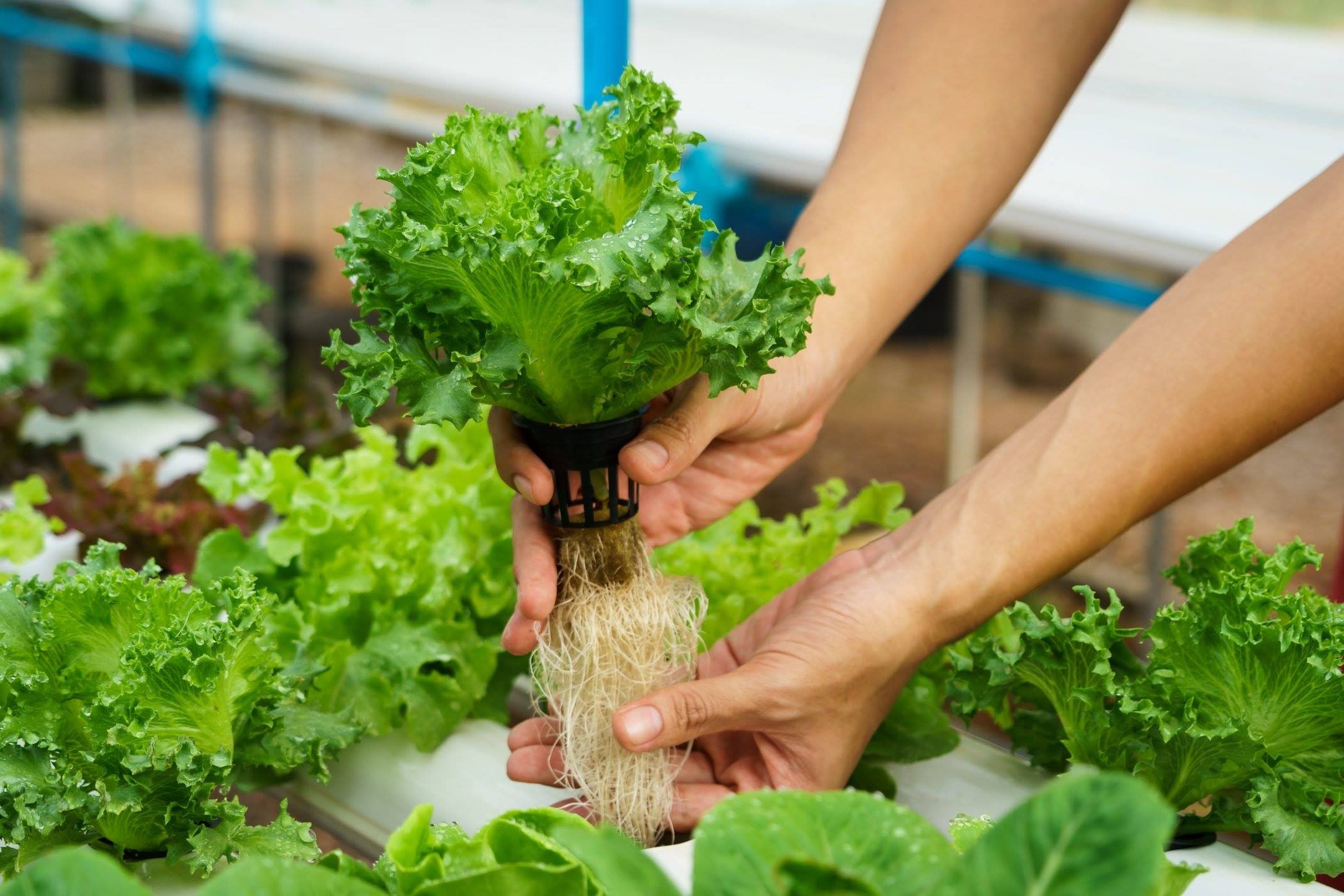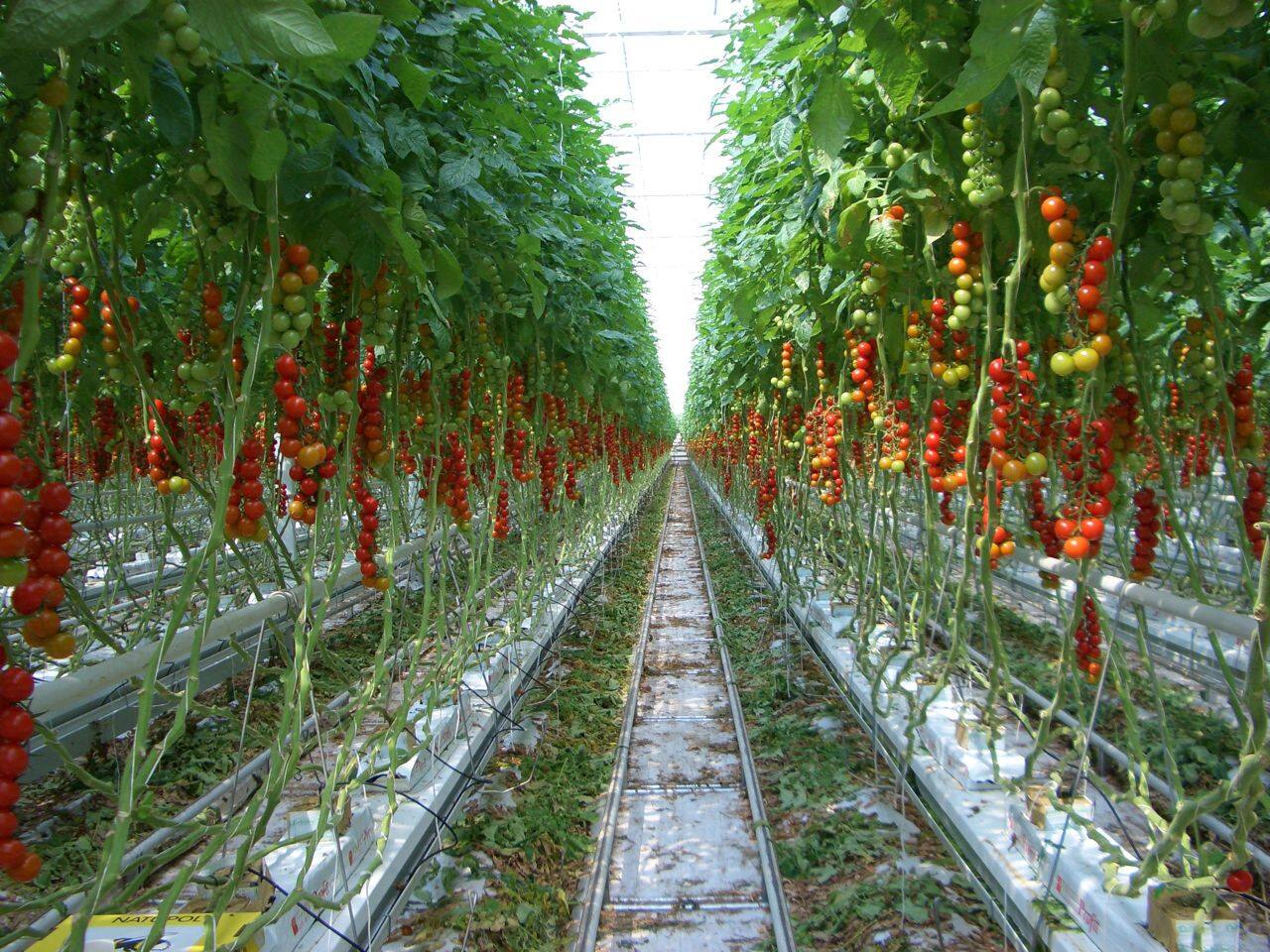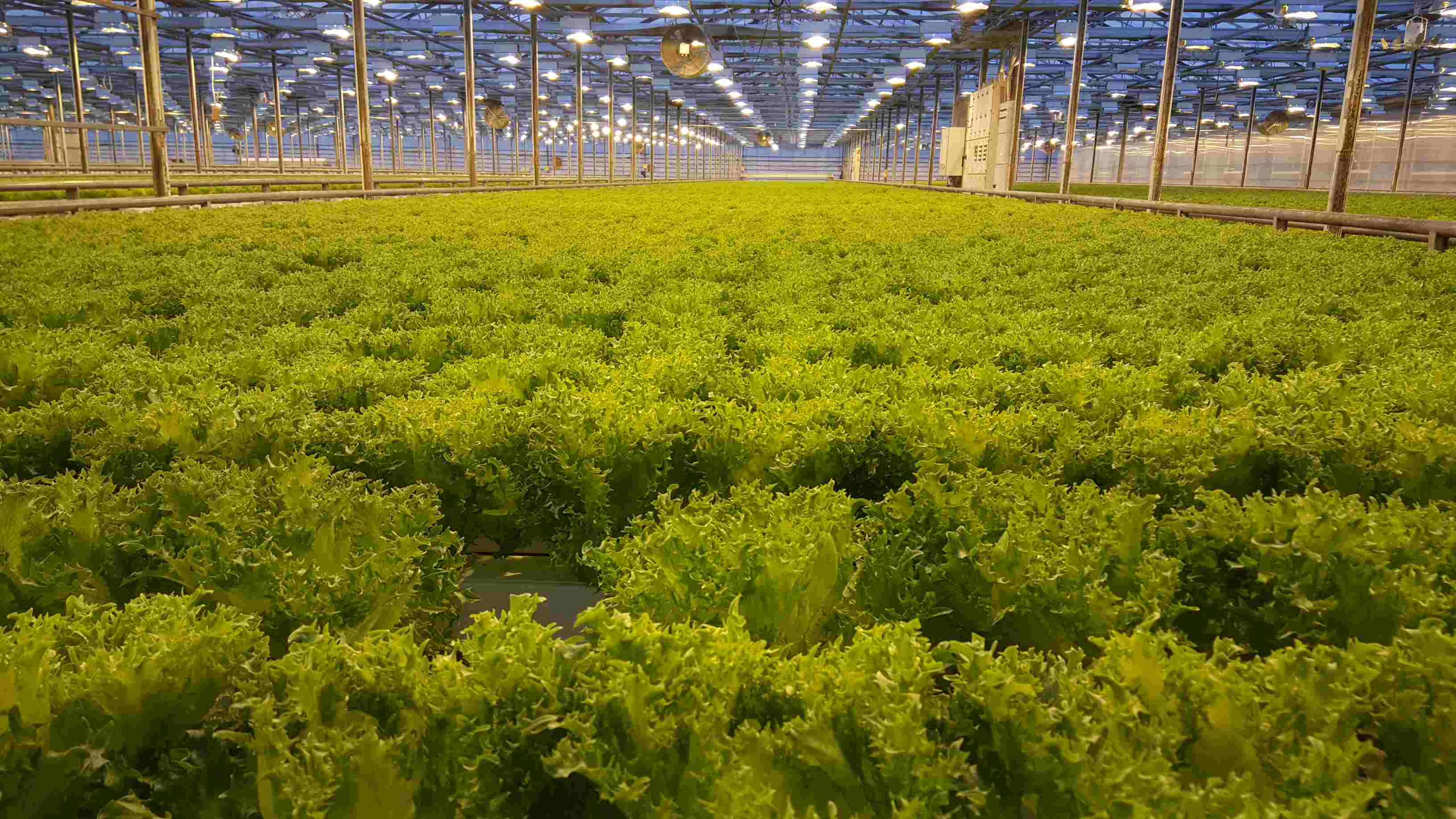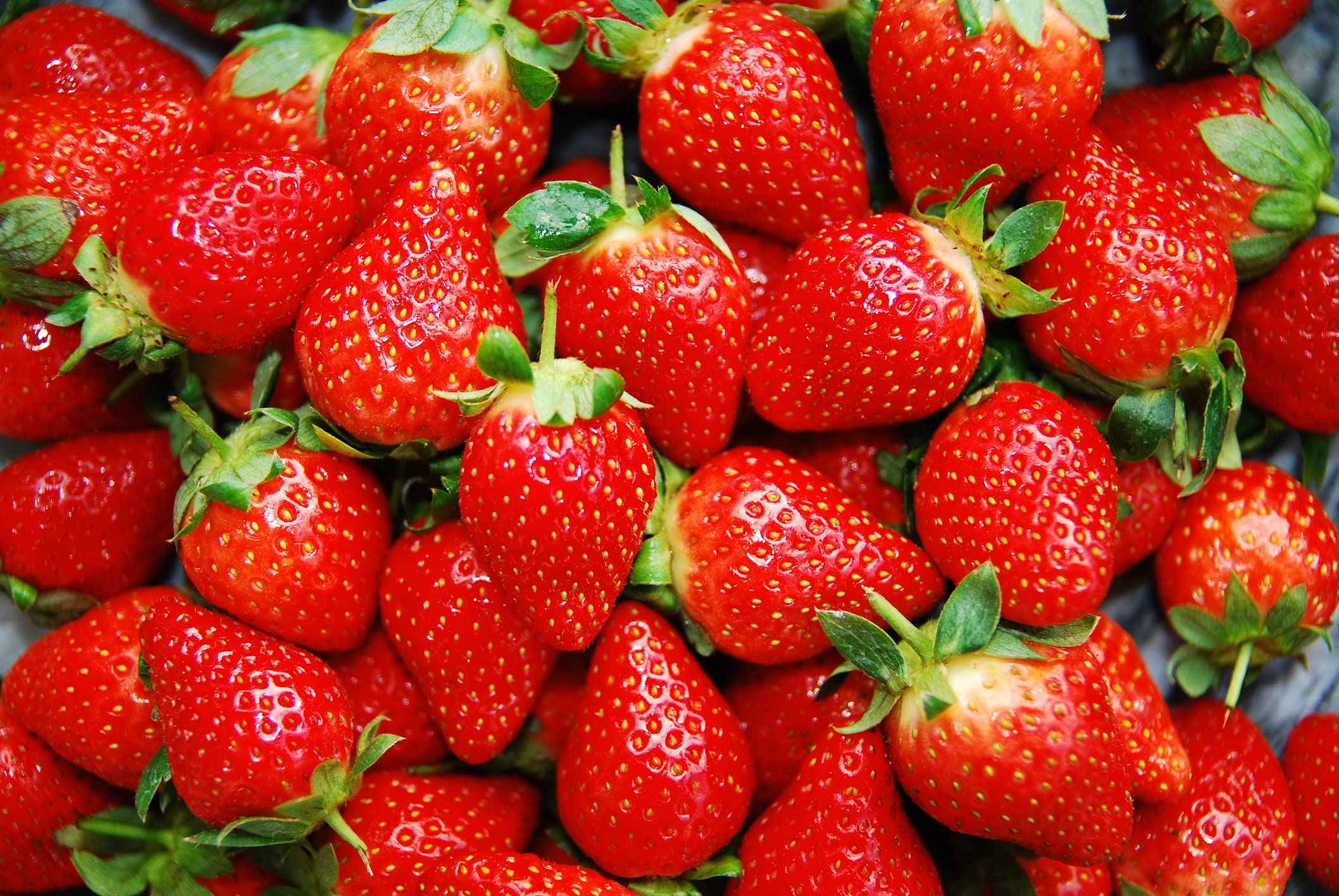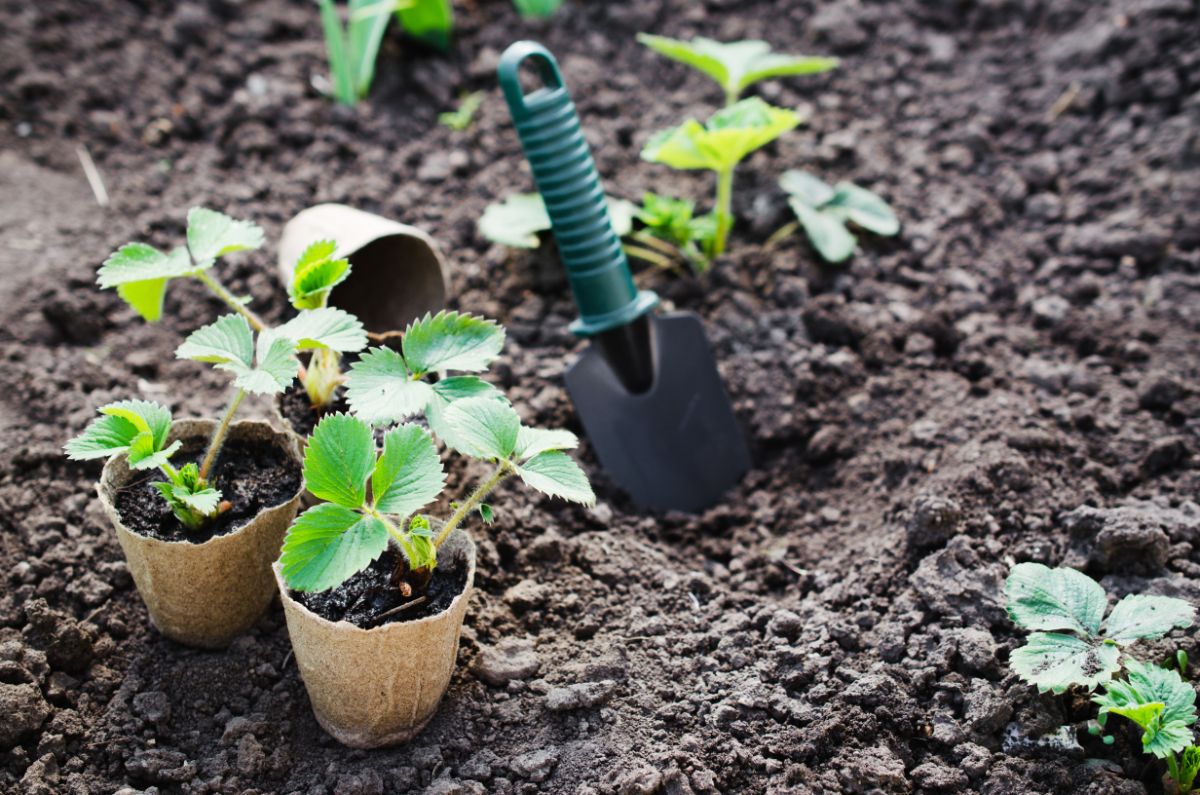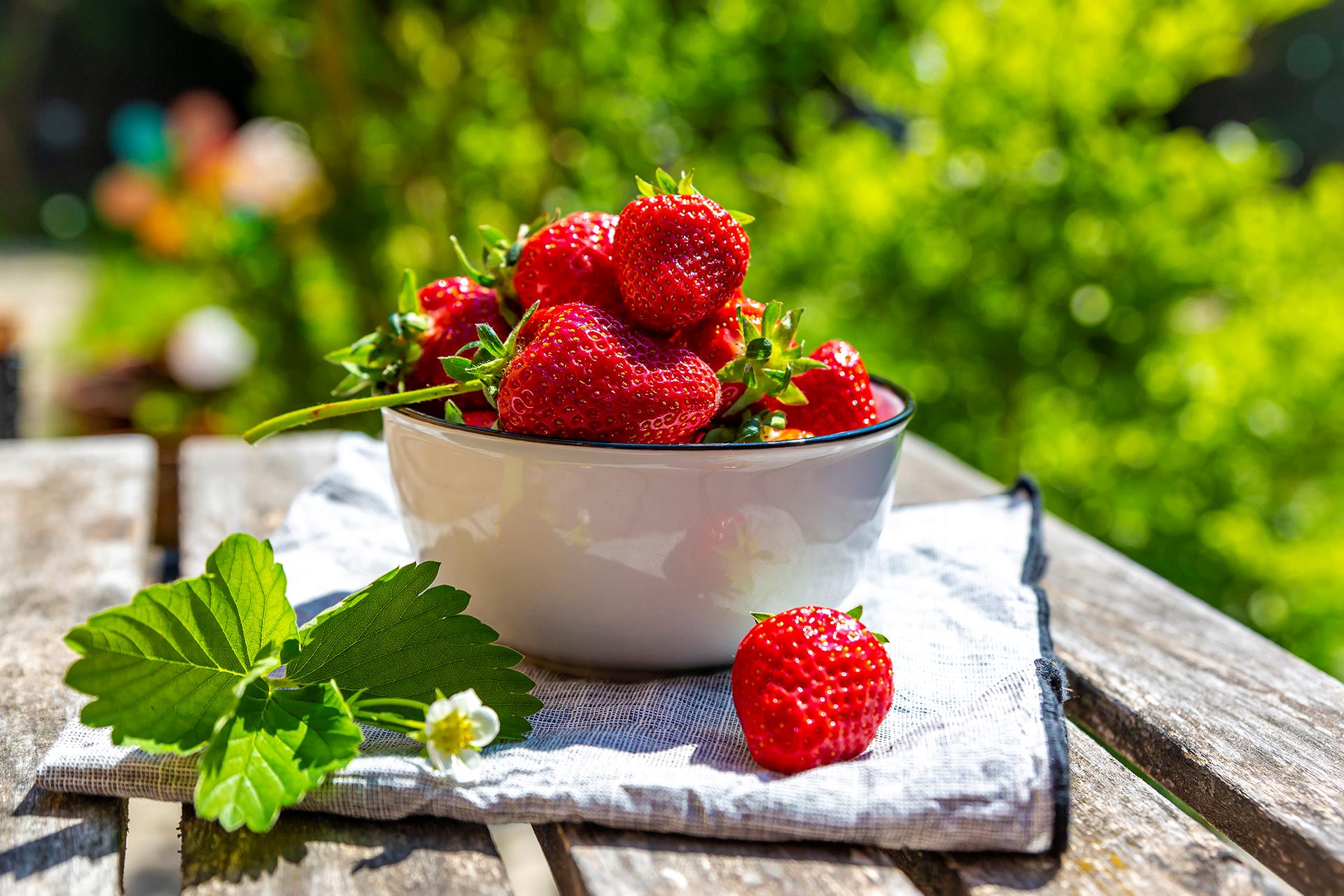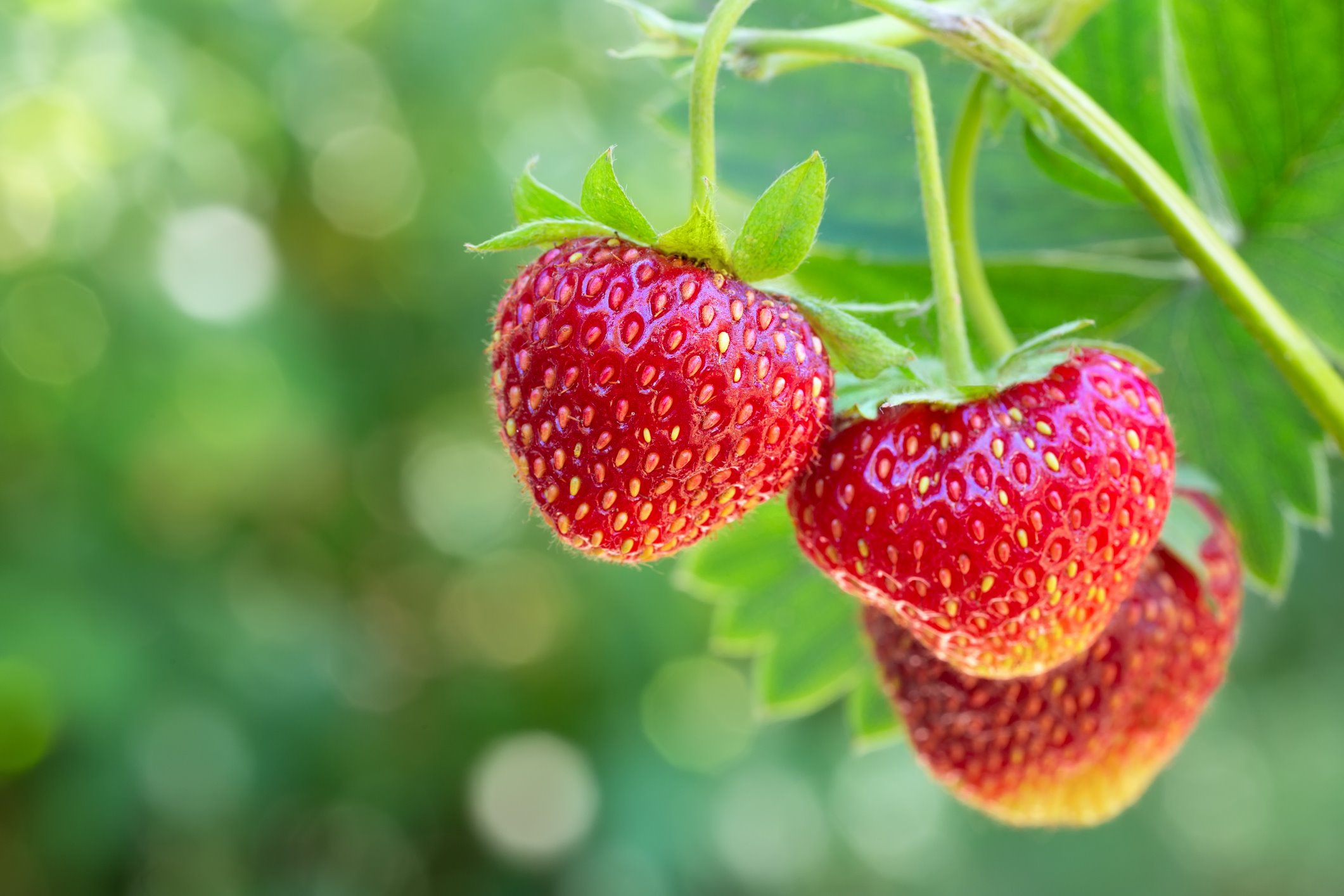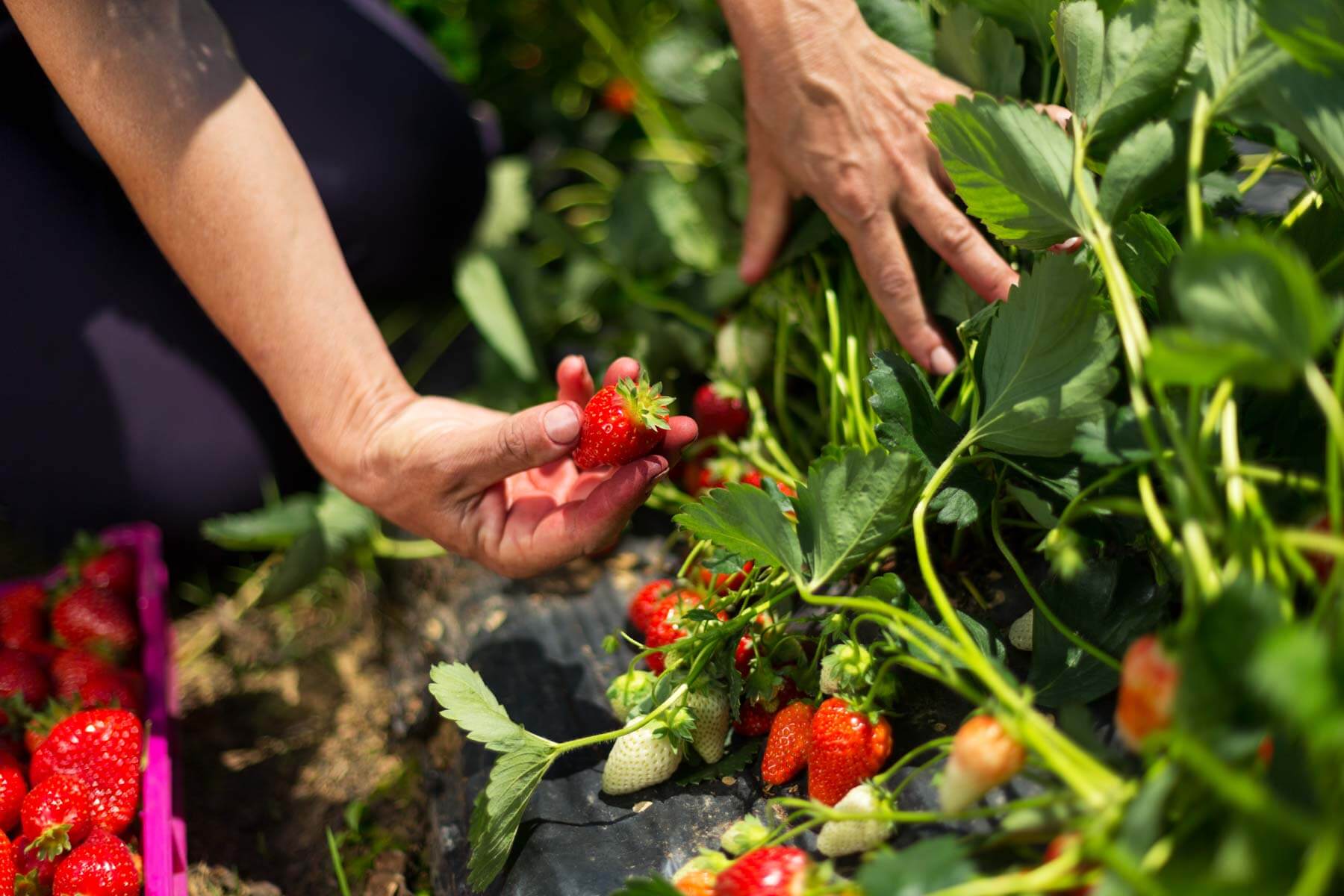Home>Gardening Tips and Tricks>Maximizing Yield>How To Grow Strawberries In Hydroponics
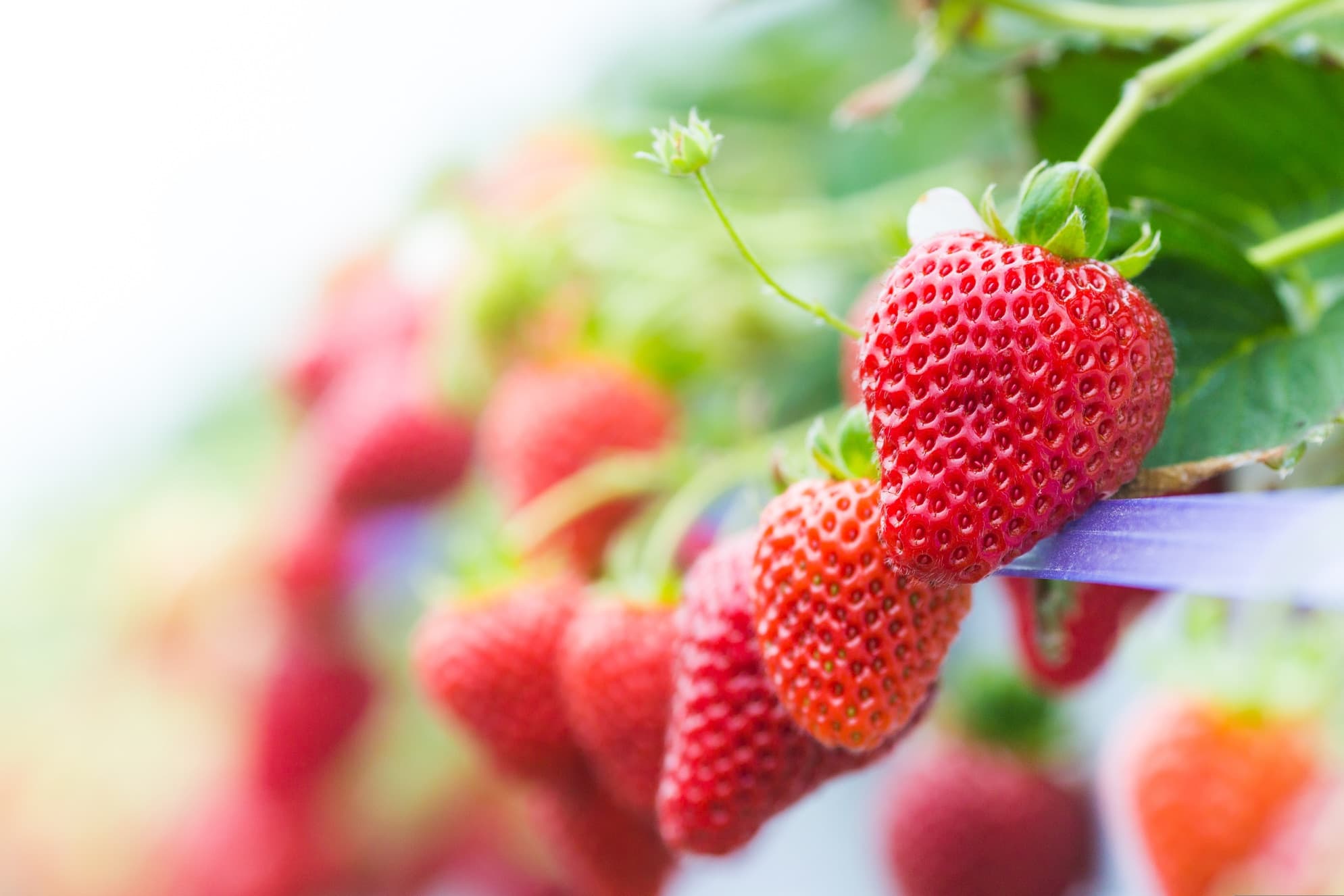

Maximizing Yield
How To Grow Strawberries In Hydroponics
Modified: January 22, 2024
Learn how to maximize your strawberry yield in hydroponics and grow juicy, delicious strawberries year-round. Expert tips and techniques for hydroponic strawberry cultivation.
(Many of the links in this article redirect to a specific reviewed product. Your purchase of these products through affiliate links helps to generate commission for Chicagolandgardening.com, at no extra cost. Learn more)
Table of Contents
- Introduction
- Benefits of Growing Strawberries in Hydroponics
- Choosing the Right Hydroponic System for Strawberries
- Selecting Strawberry Varieties for Hydroponics
- Preparing the Hydroponic Setup for Strawberry Cultivation
- Planting Strawberries in Hydroponics
- Nutrient Requirements for Hydroponic Strawberry Plants
- Maintaining the Hydroponic Environment for Strawberries
- Pest and Disease Management in Hydroponic Strawberry Growing
- Harvesting and Post-Harvest Handling of Hydroponic Strawberries
- Conclusion
Introduction
Welcome to the world of hydroponic strawberry growing! Hydroponics is a revolutionary method of cultivating plants without the use of soil. Instead, plants are grown in a nutrient-rich water solution, providing them with all the essential elements they need for robust growth. This innovative approach has gained popularity among gardeners and commercial growers alike due to its numerous benefits and the ability to maximize yield.
Strawberries, with their vibrant colors and sweet flavors, are a favorite among fruit lovers. Traditionally, they have been grown in soil-based systems, but hydroponics offers a more efficient and controlled environment for cultivating these delicate fruits. By adopting hydroponics for strawberry production, growers can enjoy a host of advantages, including higher crop yields, faster growth rates, and year-round cultivation.
Whether you are a gardening enthusiast eager to experiment with new techniques or a commercial grower looking to optimize your strawberry production, this guide will provide you with the essential information you need to successfully grow strawberries in hydroponics. From choosing the right hydroponic system to managing nutrient requirements and controlling pests, we will cover all aspects of this exciting endeavor.
Join us as we dive into the world of hydroponic strawberry growing and unlock the secrets to maximizing yield and flavor. Let’s embark on this thrilling journey and discover the wonders of growing strawberries in a soil-free environment.
Benefits of Growing Strawberries in Hydroponics
Growing strawberries in hydroponics offers a multitude of advantages that make it an appealing option for both home gardeners and commercial growers. Here are some of the key benefits:
- Maximized Yield: One of the primary benefits of growing strawberries in hydroponics is the ability to maximize yield. With precise control over environmental factors such as light, temperature, and nutrient levels, hydroponic systems create an ideal growing environment for strawberry plants, allowing them to reach their full potential. This leads to larger, healthier fruits and higher overall crop yields.
- Faster Growth and Harvesting: In a hydroponic system, strawberry plants have access to a constant supply of nutrients, eliminating the need for them to search for nutrients in the soil. This results in faster growth rates and accelerated fruit development compared to traditional soil-based cultivation. Consequently, hydroponically-grown strawberries can be harvested earlier, giving growers a head start in the market.
- Year-Round Cultivation: Unlike traditional soil-based cultivation that is limited to specific seasons, hydroponics allows for year-round cultivation of strawberries. By controlling the growing conditions in an indoor environment, such as a greenhouse or grow tent, growers can provide strawberries with the optimal conditions for growth, regardless of the external weather conditions. This ensures a consistent supply of fresh strawberries throughout the year, even in regions with harsh climates.
- Water Efficiency: Hydroponic systems are highly water-efficient compared to traditional soil-based agriculture. By recirculating and reusing the nutrient solution, hydroponics can reduce water consumption by up to 90% compared to conventional farming methods. This makes it an environmentally friendly and sustainable option for strawberry cultivation.
- Space Efficiency: Hydroponics offers growers the advantage of space efficiency. Vertical hydroponic systems, such as tower gardens or vertical racks, allow for maximum utilization of vertical space, making them ideal for urban farming or limited land availability. This enables growers to maximize their strawberry production in a small footprint.
These are just a few key benefits of growing strawberries in hydroponics. From increased yield and faster growth to year-round cultivation and water efficiency, hydroponics offers a game-changing approach to strawberry production. With these advantages in mind, it’s no wonder that more and more growers are turning to hydroponics to meet the growing demand for fresh, flavorful strawberries.
Choosing the Right Hydroponic System for Strawberries
When it comes to growing strawberries in hydroponics, selecting the right hydroponic system is crucial to ensure optimal growth and yield. There are several factors to consider when choosing a system, including space availability, budget, and personal preferences. Here are some popular hydroponic systems commonly used for growing strawberries:
- Nutrient Film Technique (NFT): The NFT system is a popular choice for growing strawberries due to its simplicity and efficiency. In this system, a thin film of nutrient-rich water continuously flows over the roots of the plants, providing them with the necessary nutrients. NFT systems are space-efficient and allow for easy monitoring and adjustment of nutrient levels.
- Drip Irrigation: Drip irrigation systems deliver a regulated flow of nutrient solution directly to the base of each strawberry plant. This method allows for precise control of water and nutrient delivery, reducing the risk of waterlogging the roots. Drip systems are easy to set up, cost-effective, and suitable for both small-scale and large-scale strawberry cultivation.
- Aeroponics: Aeroponic systems suspend the strawberry plants in air and mist the roots with a nutrient-rich mist at regular intervals. This method promotes rapid growth and nutrient absorption, resulting in vigorous and healthy plants. Aeroponics requires a higher initial investment but offers excellent water and nutrient efficiency.
- Deep Water Culture (DWC): DWC systems involve suspending the strawberry plants’ roots in a nutrient solution and providing them with oxygen through an airstone or diffuser. This system is easy to set up and maintain, making it a suitable option for beginners. However, it requires careful monitoring of oxygen levels to prevent root rot.
- Vertical Systems: Vertical hydroponic systems, such as tower gardens or vertical racks, are ideal for maximizing space utilization and are particularly popular for urban farming. These systems allow for the cultivation of strawberries on multiple levels, increasing yield in a limited area.
Consider factors such as available space, budget, and personal preferences when selecting a hydroponic system for growing strawberries. Additionally, ensure that the system can accommodate the specific needs of strawberry plants, such as proper support for their trailing habit and adequate access to light and ventilation.
It’s important to note that the choice of hydroponic system may also depend on the scale of cultivation. Small-scale growers may opt for simpler and more cost-effective systems, while commercial growers may invest in more advanced and high-capacity setups.
By carefully considering these factors and selecting a hydroponic system tailored to your needs, you can create an optimal growing environment for your strawberries, setting the stage for a successful and productive hydroponic strawberry cultivation venture.
Selecting Strawberry Varieties for Hydroponics
When it comes to selecting strawberry varieties for hydroponics, there is a wide range of options available, each with its own unique characteristics and suitability for different growing environments. Here are some factors to consider when choosing the right strawberry varieties for hydroponic cultivation:
- Day-Neutral or Everbearing Varieties: Day-neutral or everbearing varieties are ideal for hydroponic systems as they do not require specific day lengths to initiate flowering and fruiting. This means that they can produce fruit consistently throughout the growing season, allowing for continuous harvests.
- Compact Growth Habit: Look for strawberry varieties with a compact growth habit, such as bush or semi-erect types. These varieties are more suitable for hydroponic systems as they take up less space, making them easier to manage and maximize yield in limited growing areas.
- Taste and Flavor: Consider the taste and flavor profiles of different strawberry varieties. Some varieties may have sweeter or more intense flavors, while others may offer a balance between sweetness and acidity. Choose varieties that align with your personal taste preferences and the market demand in your area.
- Disease Resistance: Check for disease resistance characteristics in strawberry varieties. Some varieties may be more resistant to common diseases such as powdery mildew or botrytis. Choosing disease-resistant varieties can help reduce the risk of plant loss and the need for chemical interventions in hydroponic systems.
- Yield and Productivity: Assess the yield potential and productivity of different strawberry varieties. Look for varieties that are known for high yields and consistent fruit production. This will ensure a bountiful harvest and higher profitability in your hydroponic strawberry venture.
It’s also worth noting that some strawberry varieties may require specific environmental conditions, such as temperature or light intensity, to thrive. Consider the conditions you can provide in your hydroponic setup and choose varieties that are well-suited to those conditions.
Popular strawberry varieties that are commonly grown in hydroponics include ‘Albion,’ ‘Seascape,’ ‘Everest,’ and ‘Fresca.’ However, there are many other varieties available, so it’s advisable to consult with local nurseries or agricultural extension services to get recommendations specific to your region.
By carefully selecting strawberry varieties that are well-suited to hydroponic cultivation, you can maximize the potential of your system and ensure a successful and flavorful harvest of strawberries year-round.
Preparing the Hydroponic Setup for Strawberry Cultivation
Before you start growing strawberries in a hydroponic system, it’s important to properly prepare your setup to create an optimal growing environment. Here are the key steps to follow when preparing your hydroponic setup for strawberry cultivation:
- Selecting the Growing Containers: Choose appropriate containers or grow bags to hold the growing media and support the strawberry plants. Ensure that the containers allow for proper drainage and aeration to prevent waterlogging of the roots.
- Choosing the Growing Media: Select a suitable growing media that provides good support for the plants and proper water retention while allowing for adequate drainage. Common choices for hydroponic strawberry cultivation include perlite, coconut coir, or a blend of perlite and vermiculite.
- Setting up the Irrigation System: Install an efficient irrigation system to deliver water and nutrient solution to the strawberry plants. This can be a drip irrigation system, NFT system, or any other system that suits your chosen hydroponic setup. Ensure that the system is properly calibrated to deliver the right amount of water and nutrients.
- Monitoring and Adjusting pH and EC Levels: Regularly monitor and adjust the pH and electrical conductivity (EC) levels of the nutrient solution. Strawberry plants prefer a pH range of 5.5 to 6.5, and maintaining the appropriate EC levels is crucial for their nutrient uptake. Use a pH meter and EC meter to measure and adjust the nutrient solution accordingly.
- Providing Adequate Lighting: Ensure that your hydroponic setup provides adequate lighting for the strawberry plants. If growing indoors, consider using supplemental grow lights to provide the right spectrum and intensity of light. Strawberry plants generally require around 12 to 16 hours of light per day for optimal growth and fruiting.
- Managing Temperature and Humidity: Maintain optimal temperature and humidity levels in your hydroponic setup. Strawberry plants thrive in temperatures between 60 to 80°F (15 to 27°C), with a relative humidity range of 60% to 70%. Proper ventilation and air circulation help prevent heat buildup and the development of fungal diseases.
Additionally, it’s important to clean and sanitize your hydroponic system before starting strawberry cultivation. Thoroughly clean the containers, irrigation lines, and other components to remove any potential contaminants and reduce the risk of disease or pest issues.
By following these steps and properly preparing your hydroponic setup, you can create an ideal environment for growing strawberries. This will set the stage for successful cultivation and maximize the potential for high yields of delicious, hydroponically-grown strawberries.
Planting Strawberries in Hydroponics
Once you have prepared your hydroponic setup, it’s time to start planting your strawberry plants. Here are the key steps to follow when planting strawberries in a hydroponic system:
- Prepare the Strawberry Plants: Start by selecting healthy, disease-free strawberry plants from a reliable nursery or propagate them from runners. Trim off any damaged or dead leaves and roots, leaving only the healthy parts.
- Planting in Growing Media: Place the strawberry plants in the growing media, ensuring that the roots are fully covered and supported. Gently press the growing media around the roots to secure the plants in place. Space the plants according to the recommended spacing for the variety you are growing.
- Establishing the Strawberry Crowns: Position the strawberry crowns (the base of the plant where the leaves emerge) at the same level as the growing media surface. Avoid burying the crowns too deep, as it can lead to rotting. The crown should be visible above the growing media.
- Watering the Newly Planted Strawberries: After planting, thoroughly water the strawberry plants to ensure that the growing media is evenly moist. This helps the plants establish their roots and reduces the risk of dehydration. Monitor the moisture levels and maintain appropriate watering as the plants grow.
- Providing Support: As the strawberry plants grow and produce fruits, they may need additional support to prevent them from sprawling on the ground. Install trellises or support structures to lift the plants off the ground, keeping the fruits clean and reducing the risk of rot and disease.
- Pruning Runners: Strawberry plants naturally produce runners, which are long stems that grow from the mother plant and develop new plants at their nodes. In a hydroponic system, it’s advisable to prune these runners to encourage better plant focus and to prevent overcrowding. This allows the plants to put more energy into fruit production.
Remember to regularly monitor the hydroponic system and adjust the nutrient solution, pH, and EC levels as needed. Additionally, provide adequate light, temperature, and humidity to ensure optimal growth and fruiting of the strawberry plants.
By following these steps, you can ensure proper planting of your strawberries in the hydroponic system, setting them up for healthy growth and abundant fruit production.
Nutrient Requirements for Hydroponic Strawberry Plants
Providing the right balance of nutrients is essential to ensure the healthy growth and prolific fruiting of hydroponic strawberry plants. Since these plants are grown without soil, it is crucial to supply them with a nutrient solution that contains all the essential elements they need. Here are the key nutrients and their requirements for hydroponic strawberry plants:
- Nitrogen (N): Nitrogen is essential for vegetative growth and overall plant development. It helps in the production of chlorophyll, which is necessary for photosynthesis. Ensure an adequate supply of nitrogen throughout the growth stages, but be cautious not to overapply, as excessive nitrogen can lead to excessive vegetative growth and reduced fruit quality.
- Phosphorus (P): Phosphorus is critical for root development, flowering, and fruiting in strawberry plants. It plays a vital role in energy transfer and the synthesis of DNA and RNA. Ensure an adequate supply of phosphorus to support healthy growth, flower formation, and fruit production.
- Potassium (K): Potassium is essential for the overall health and vigor of strawberry plants. It helps in nutrient uptake, enzyme activation, and water regulation within the plant. Adequate potassium levels promote strong flower development, increased fruit size, and improved disease resistance.
- Calcium (Ca): Calcium is necessary for cell wall structure and helps prevent disorders such as blossom end rot. Adequate calcium levels are crucial for strong and healthy strawberry plants.
- Magnesium (Mg): Magnesium is an essential component of chlorophyll and plays a critical role in photosynthesis. It is necessary for the production of energy-rich molecules in the plant. Maintain sufficient magnesium levels to ensure optimal growth and productivity of strawberry plants.
- Microelements: In addition to the macronutrients mentioned above, strawberry plants require various microelements such as iron, manganese, zinc, copper, boron, and molybdenum. These micronutrients are essential for enzyme activation, nutrient uptake, and overall plant health. Ensure that the nutrient solution provides an appropriate balance of these micronutrients.
It is important to monitor the nutrient levels regularly and adjust the nutrient solution accordingly. Conduct regular tests of the solution’s pH and electrical conductivity (EC) since variations in pH can impact nutrient availability. Maintaining a pH range of 5.5 to 6.5 and an appropriate EC will help ensure optimal nutrient absorption by the strawberry plants.
Consider using a complete hydroponic nutrient solution specifically formulated for strawberries or tailor the nutrient solution based on the specific nutrient requirements of the plants. Monitor the plants for any signs of nutrient deficiency or excess and make adjustments as needed to maintain a healthy and productive crop.
By providing the right nutrients in the correct quantities, you will support the vigorous growth, vibrant flowering, and abundant fruiting of your hydroponic strawberry plants, yielding flavorful and nutritious berries for your enjoyment.
Maintaining the Hydroponic Environment for Strawberries
Creating and maintaining an optimal environment is crucial for the successful growth and productivity of hydroponic strawberry plants. Here are some key factors to consider when maintaining the hydroponic environment for strawberries:
- Lighting: Strawberries require adequate light for photosynthesis and fruiting. If growing indoors, provide them with a high-quality grow light that emits the appropriate spectrum and intensity of light. Aim for 12 to 16 hours of light per day to promote healthy growth and fruit development.
- Temperature: Maintain an optimal temperature range for strawberry plants, typically between 60 to 80°F (15 to 27°C). Keep the temperature as consistent as possible to avoid temperature fluctuations, which can stress the plants and affect growth and fruiting. Good air circulation and ventilation are also important to prevent heat buildup and prevent the development of fungal diseases.
- Humidity: Strawberry plants prefer a relative humidity range of 60% to 70%. Higher humidity levels can increase the risk of fungal diseases, while excessively low humidity can cause dehydration in plants. Maintain proper humidity levels in the growing area through adequate ventilation and humidification or dehumidification methods as needed.
- Air Quality: Ensure good air quality in the hydroponic environment. Carbon dioxide (CO2) supplementation can enhance photosynthesis and boost plant growth, especially in enclosed spaces. Monitor CO2 levels and consider supplemental CO2 if necessary. Also, keep the growing area free from dust, pests, and pathogens to promote healthy plant growth.
- pH and EC Levels: Regularly monitor and adjust the pH and electrical conductivity (EC) levels of the nutrient solution. Strawberry plants thrive within a pH range of 5.5 to 6.5. Maintaining the proper pH balance is crucial for nutrient absorption. The EC level determines the concentration of nutrients in the solution. Ensure it remains within the recommended range for strawberries to prevent nutrient imbalances or deficiencies.
- Water and Nutrient Management: Maintain a consistent and balanced supply of water and nutrients to the plants. Regularly monitor the nutrient solution levels and ensure that they are within the desired range. Avoid overwatering or underwatering, as both can have detrimental effects on plant health. Regularly flush and replenish the nutrient solution as needed to prevent nutrient buildup or deficiencies.
- Pest and Disease Management: Implement effective pest and disease management strategies to prevent and control infestations. Regularly inspect the plants for any signs of pests or diseases, such as aphids, mites, or fungal infections. Introduce biological controls or use appropriate organic or chemical treatments to mitigate the risk of damage to the plants.
Regular monitoring of the hydroponic environment and taking appropriate actions to maintain optimal conditions will ensure the health and productivity of your strawberry plants. Be diligent in observing any changes in growth, color, or overall plant vitality, as they can indicate underlying environmental issues that need attention.
By providing a well-maintained hydroponic environment, you will set the stage for robust growth, abundant flowering, and a bountiful harvest of healthy and delicious strawberries.
Pest and Disease Management in Hydroponic Strawberry Growing
Just like any other type of cultivation, hydroponic strawberry growing is not immune to pest and disease issues. However, with proper preventive measures and proactive management, you can minimize the risk and keep your plants healthy. Here are some key strategies for pest and disease management in hydroponic strawberry growing:
- Monitor Regularly: Regularly inspect your strawberry plants for any signs of pests or diseases. Keep a close eye on the leaves, stems, flowers, and fruits. Look for discoloration, lesions, deformities, pests, or any other abnormal growth or symptoms.
- Provide Clean Conditions: Ensure a clean growing environment by practicing good hygiene. Remove any dead or decaying plant matter promptly and keep the growing area free from debris. This helps eliminate potential breeding grounds for pests and pathogens.
- Implement Proper Sanitation: Disinfect all equipment and tools used in your hydroponic system to prevent the spread of diseases. This includes cleaning and sanitizing containers, tubes, pumps, and other components regularly. Use disinfectants recommended for use in hydroponic systems to avoid negative impacts on plant health.
- Introduce Beneficial Insects: Employ biological controls, such as predatory mites or ladybugs, to manage pests. These beneficial insects can help control common pests like aphids, spider mites, or thrips. Introducing them at the first sign of infestation can prevent pest populations from spiraling out of control.
- Provide Adequate Ventilation: Proper airflow and ventilation are important for creating an unfavorable environment for pests and diseases. Ensure good air circulation around the plants by using fans or vents. This helps minimize the conditions that can favor the development and spread of fungal diseases.
- Practice Proper Nutrient Management: Maintain a balanced nutrient solution as nutrient deficiencies can weaken plants and make them more susceptible to pests and diseases. Ensure a proper balance of all essential nutrients to support healthy growth and enhance the plants’ immune response.
- Use Organic or Chemical Treatments: If needed, consider using targeted organic or chemical treatments to control pests or diseases. However, be cautious to choose products that are safe for use in hydroponic systems and follow all application instructions carefully.
- Rotate Crops: Avoid continuous planting of strawberries in the same hydroponic system or growing area. Crop rotation helps disrupt pest and disease cycles and reduces the buildup of pathogens in the growing media.
Early detection and swift action are crucial in managing pest and disease issues. If you notice any signs of trouble, take immediate steps to isolate affected plants, treat the problem, and prevent further spread. Consult with local gardening experts or agricultural extension services for specific pest and disease management recommendations in your area.
By implementing these strategies, you can effectively manage pest and disease issues in your hydroponic strawberry growing, keeping your plants healthy and maximizing their productivity.
Harvesting and Post-Harvest Handling of Hydroponic Strawberries
When it comes to harvesting hydroponic strawberries, timing is crucial to ensure optimal flavor, texture, and shelf life. Here are the key steps involved in harvesting and post-harvest handling of hydroponic strawberries:
- Observing Fruit Maturity: Monitor your hydroponic strawberry plants closely to determine the optimal time for harvest. Look for fully ripe fruits with a vibrant color, firm texture, and intense aroma. Generally, strawberries are ready for harvest when they have reached their full size and are fully red.
- Gentle Removal of Strawberries: Carefully detach the strawberries from the plants using your fingers or scissors. Be gentle to avoid damaging both the fruit and the plant. It is best to harvest strawberries with the calyx (the green leafy part) intact, as this helps protect the fruit and extends its shelf life.
- Immediate Cooling: After harvesting, it is important to cool the strawberries as quickly as possible to maintain their freshness and quality. Place them in a cool storage area or immediately transfer them to a refrigerator set to a temperature between 32°F and 36°F (0°C to 2°C). This helps slow down the ripening process and extends the shelf life of the strawberries.
- Minimizing Handling: Handle the strawberries gently to prevent bruising or damage. Excessive handling can lead to softening or deterioration of the fruits. Avoid stacking or piling the strawberries on top of each other during transportation or storage, as this can cause crushing and bruising.
- Moisture Management: Moisture management is critical in post-harvest handling. Avoid washing or wetting the strawberries before storage, as excess moisture can promote the growth of mold and spoilage. If necessary, gently wipe the strawberries with a clean, dry cloth to remove any dirt or debris.
- Packaging: Package hydroponic strawberries in ventilated containers or punnets that allow for proper airflow. This helps prevent moisture buildup and allows the fruits to breathe. Consider using clamshell containers or baskets that provide protection while allowing for adequate ventilation.
- Storage and Transportation: Store and transport the packaged strawberries in a refrigerated environment to maintain their quality. Keep the temperature between 32°F and 36°F (0°C to 2°C), with humidity levels around 90-95% to minimize moisture loss. Avoid exposure to direct sunlight or extremes in temperature during transportation.
- Consumption or Distribution: Strawberries are best consumed or distributed as soon as possible after harvest to enjoy their optimal taste and freshness. If distributing, ensure proper handling, storage, and transportation to maintain the quality and extend the shelf life of the strawberries.
By following these steps, you can harvest hydroponic strawberries at their peak ripeness and ensure that they retain their flavor, texture, and nutritional value throughout the post-harvest process.
Remember, hydroponically-grown strawberries offer a unique opportunity for year-round cultivation and continuous harvests. By implementing proper harvesting and post-harvest practices, you can enjoy the delightful taste of freshly harvested hydroponic strawberries for an extended period.
Conclusion
Growing strawberries in hydroponics is a rewarding and efficient way to produce delicious, high-quality fruits. By harnessing the power of controlled environments and precise nutrient delivery, hydroponic systems allow for maximum yield, faster growth rates, and year-round cultivation. Whether you are a gardening enthusiast or a commercial grower, the benefits of hydroponic strawberry cultivation are clear.
From choosing the right hydroponic system and selecting suitable strawberry varieties to preparing the hydroponic setup and maintaining the optimal environment, each step plays a crucial role in maximizing the yield and flavor of your strawberries. Providing the right nutrient balance, managing pests and diseases, and implementing effective harvesting and post-harvest handling practices are key elements in ensuring a successful hydroponic strawberry growing venture.
Hydroponics offers numerous advantages for strawberry cultivation, including space efficiency, water efficiency, and the ability to grow strawberries year-round. It allows growers to have more control over the growing environment and deliver the optimal conditions for strawberry plants’ growth and productivity. Plus, the absence of soil eliminates concerns about soil-borne diseases and enables cleaner and more sustainable farming practices.
As you embark on your hydroponic strawberry growing journey, don’t be afraid to experiment, monitor, and fine-tune your techniques. Each growing environment and system may have its own unique challenges and requirements. Stay proactive in addressing any issues that may arise, and always seek guidance from local experts and resources to ensure success.
By integrating the knowledge and best practices outlined in this guide, you will be well-equipped to cultivate healthy, productive strawberry plants that yield plentiful harvests of juicy, flavorful strawberries. Enjoy the bountiful rewards of hydroponic strawberry growing and savor the joy of fresh, homegrown strawberries from your own hydroponic garden.
